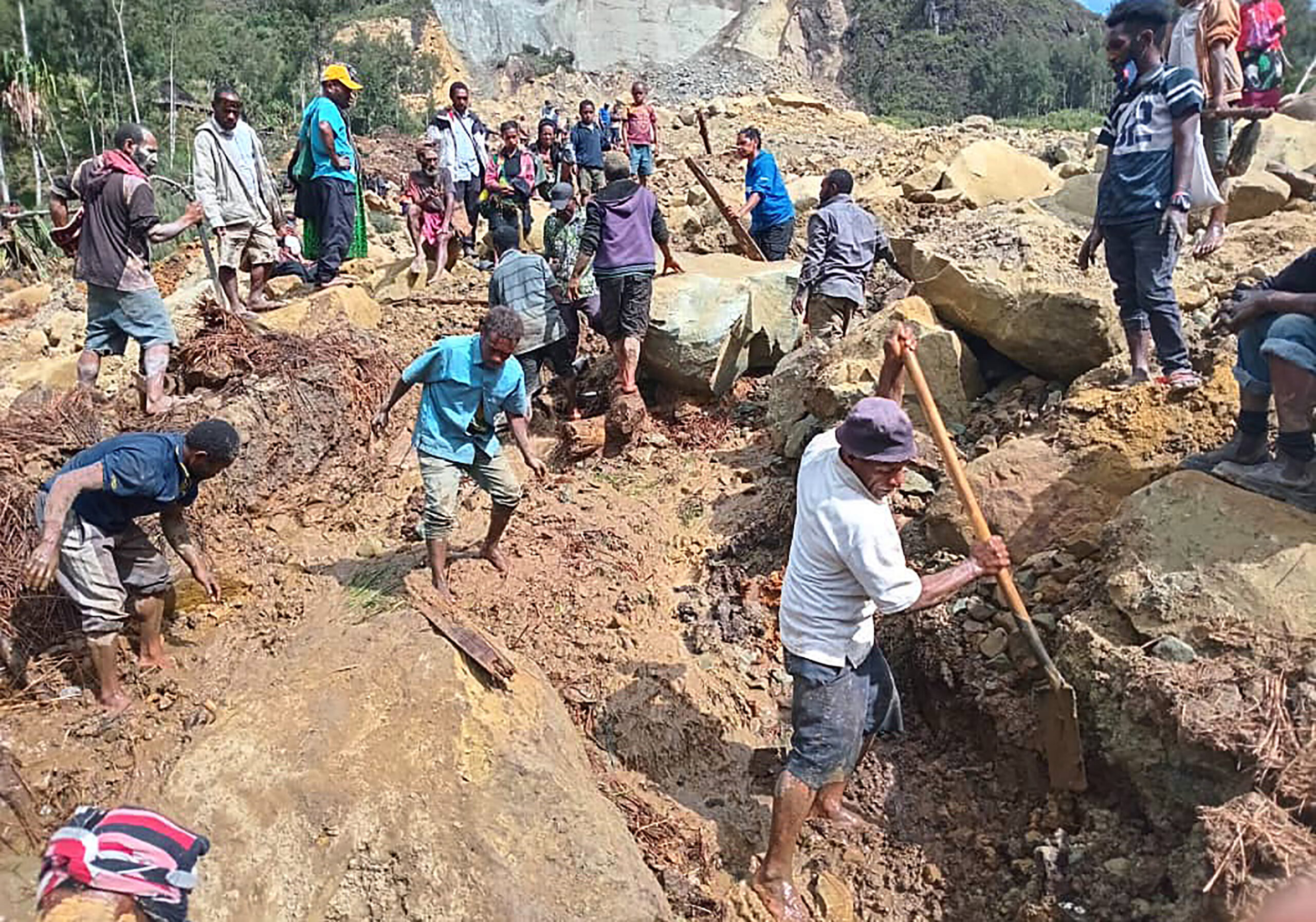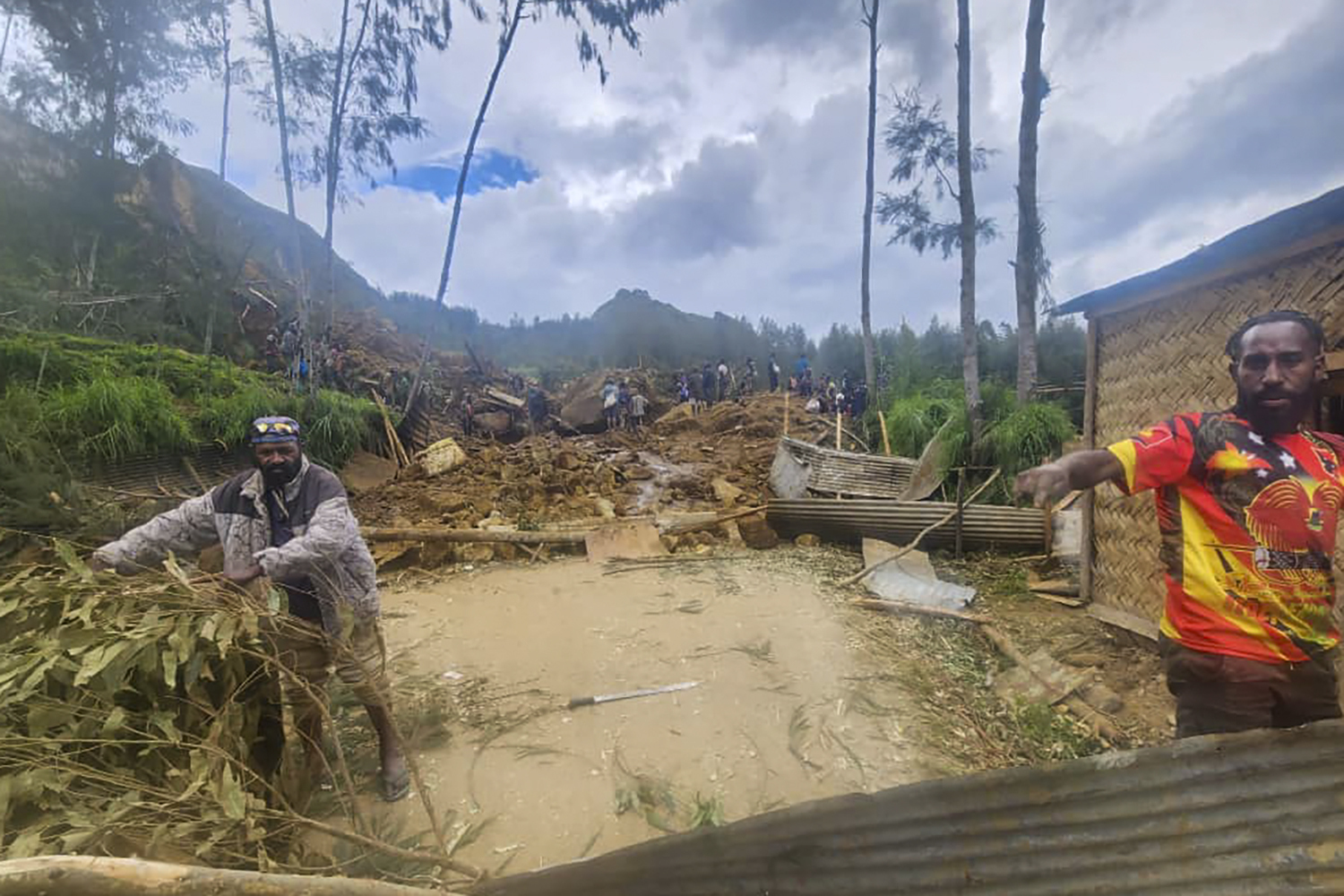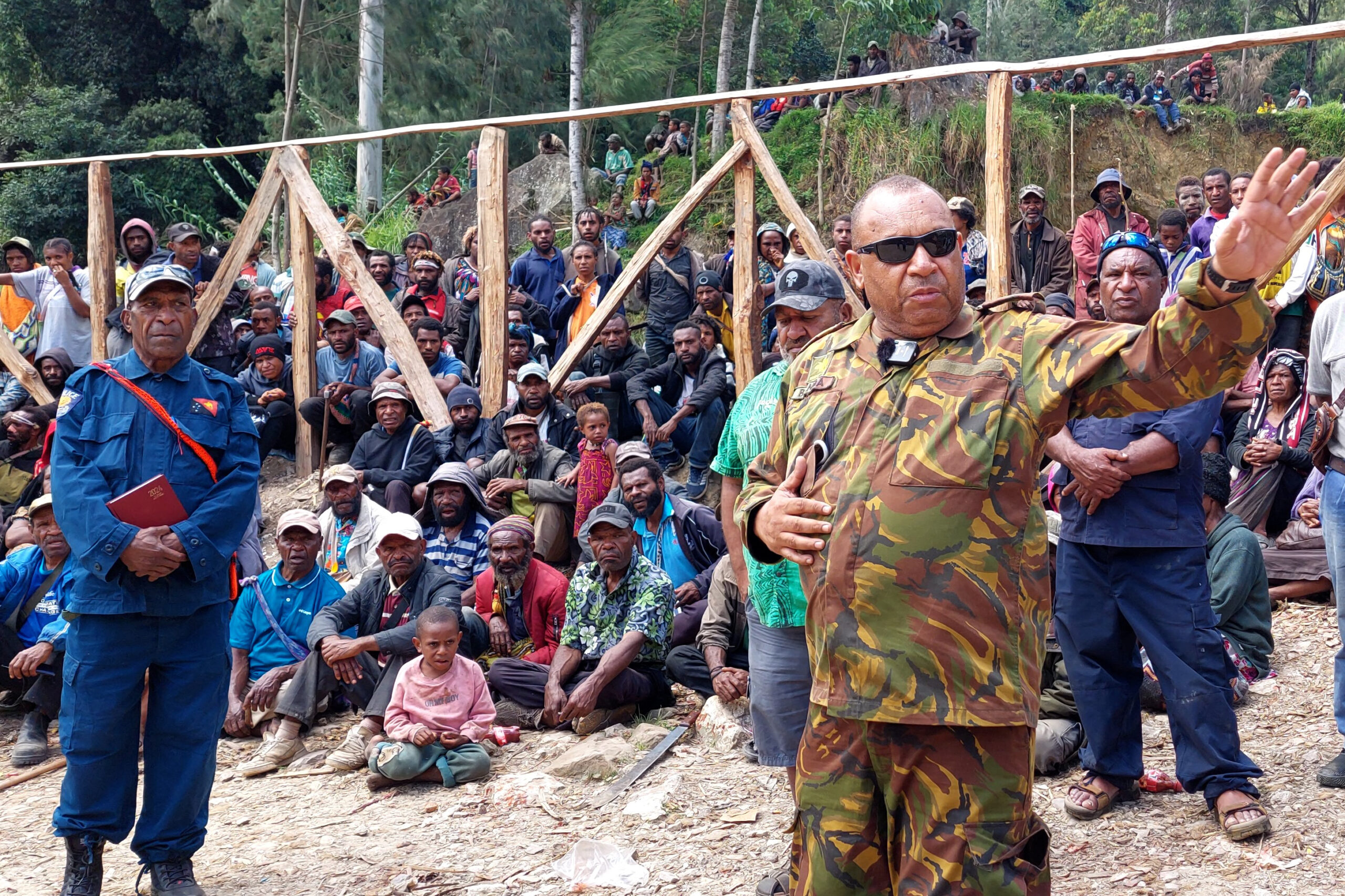Papua New Guinea reports over 2,000 people buried alive in landslide

This handout photo taken and received on May 26, 2024 from the International Organization for Migration shows people digging at the site of a landslide at Yambali Village in the region of Maip Mulitaka, in Papua New Guinea’s Enga Province. More than 670 people are believed dead after a massive landslide in Papua New Guinea, a UN official told AFP on May 26 as aid workers and villagers braved perilous conditions in their desperate search for survivors. Agence France-Presse
PORT MORESBY — Papua New Guinea informed the UN on Monday that more than 2,000 people were buried in a massive landslide that swept over a remote village, according to a copy of the letter obtained by AFP.
“The landslide buried more than 2,000 people alive and caused major destruction,” the country’s national disaster center told the UN office in Port Moresby.
As of early Monday, rescuers digging through mud and rocks say they are being obstructed by falling debris, dangerous terrain and tribal fighting along a key supply route.
READ: UN raises Papua New Guinea landslide death toll estimate to 670
A once-bustling remote hillside village in Enga province was almost wiped out when a chunk of Mount Mungalo collapsed in the early hours of Friday morning, burying scores of homes and the people sleeping inside them.
Article continues after this advertisementLocals have been using shovels and pieces of wood to find bodies under the landslide — a mix of car-sized boulders, uprooted trees and churned-up earth that is thought to be up to eight meters (26 feet) deep.
Article continues after this advertisementREAD: Papua New Guinea landslide rescue ‘racing against time’: UN
“The landmass is still sliding, rocks are falling from the mountain,” UN migration agency official Serhan Aktoprak told AFP.
Streams of water were flowing between the soil and debris while cracks were appearing in land adjacent to the landslip, Aktoprak said.
“This might trigger a further sliding,” the UN official warned, posing a “serious risk” both to rescuers and people living in the area.
‘Houses burning’
Aktoprak said his colleagues had to flee falling rocks at the site at the weekend.
The estimated death toll climbed to 670 over the weekend after local leaders and disaster workers reassessed the size of the population lying beneath mud and rubble spanning almost four football fields in length.
Five bodies and the leg of a sixth had been pulled from the debris by Saturday night.
“It has been already three days and seven hours since this disaster hit so basically we are racing against time but to what extent we might be able to bring people to safety is another issue,” Aktoprak said.

Villagers search through a landslide in Yambali in the Highlands of Papua New Guinea, Sunday, May 26, 2024. The International Organization for Migration has increased its estimate of the death toll from a massive landslide Friday May 24 in Papua New Guinea to more than 670. (Mohamud Omer/International Organization for Migration via Associated Press)
More than 1,000 people have been displaced by the catastrophe, aid agencies have estimated, with food gardens and water supplies destroyed.
An outbreak of tribal fighting unrelated to the disaster was blocking attempts to bring in humanitarian aid from the provincial capital Wabeg, the UN official said.
“Many houses are burning with others emitting smoke. Women and children have been displaced while all the youth and men in the area were carrying bush knifes,” he said, quoting from a report from an aid convoy attempting to reach the disaster site.
The tribal battles had also delayed the delivery of heavy machinery and diggers.
‘Nobody escaped’
The area is located some 600 kilometers (370 miles) from Port Moresby, the capital of the South Pacific island nation.
A schoolteacher from a neighboring village, Jacob Sowai, said more than 2,000 people lived in the disaster zone.
“People are very sad. Nobody escaped. It’s very hard to collect information. Nobody escaped. We don’t know who died because records are buried,” he told AFP.
People from adjoining villages were helping to unearth bodies, said Nickson Pakea, president of the nearby Porgera Chamber of Commerce and Industry.

Papua New Guinea’s Defence Force officer Michael Band talks to locals at the site of a landslide in Mulitaka village in the region of Maip Mulitaka, in Papua New Guinea’s Enga Province on May 26, 2024. Agence France-Presse
“Because of the hard rock and the clay, the stone, and the rocks that came in, it is quite messy. It needs excavators to remove the debris,” Pakea told AFP.
A nearby mining joint venture, New Porgera Limited, had agreed to provide mechanical diggers to help the rescuers and clear roads, he said.
Located on the side of densely forested Mount Mungalo, the village was home to a transient population that could swell to more than 4,000 people.
It served as a trading post for miners who panned for gold in the highlands.
Heavy rains
Locals said the landslip may have been triggered by heavy rains that have saturated the region in recent weeks.
Papua New Guinea has one of the wettest climates in the world, according to the World Bank, with the heaviest downpours concentrated in the humid highland interior.
Research has found shifting rainfall patterns linked to climate change could exacerbate the risk of landslides.
Since the start of the year, the country has experienced multiple earthquakes, floods and landslides, stretching the resources of emergency services.